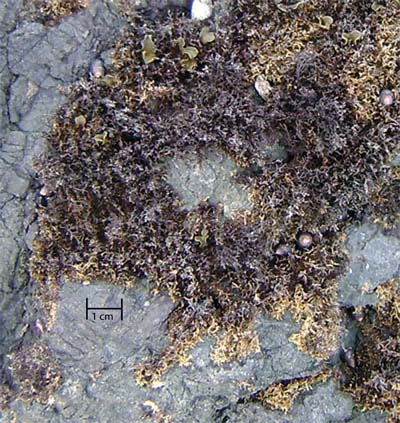During the summer of 2003 in California, there was a wide spread bleaching event of Endocladia muricata. This event sparked the curiosity of L.J.H. Hunt and M.W. Denny, leading them to further investigate the process behind the formation of fairy rings. During their investigation they found that hydrated fronds have a lower thermotolerance but spend more time photosynthesizing. Fairy rings are formed by the differential thermotolerance of fronds as a function of their location within the clump of Endocladia muricata. Inner fronds stay hydrated longer allowing the fronds to photosynthesize more but have a lower thermotolerance.Thus inner fronds are taller but are also more likely to die during hot day. Outer fronds are shorter but are able to survive on hot days. When Endocladia is exposed during a low tide that coincides with high air temperatures, fairy rings can form(1).
|



